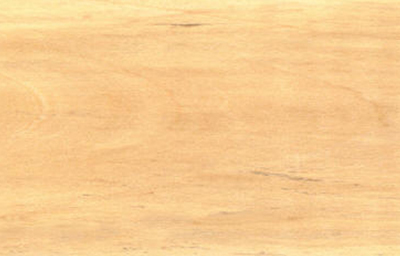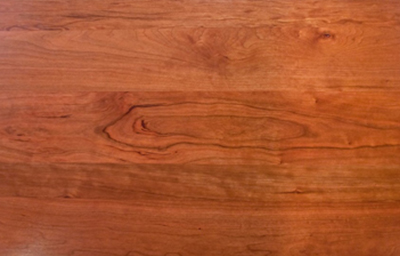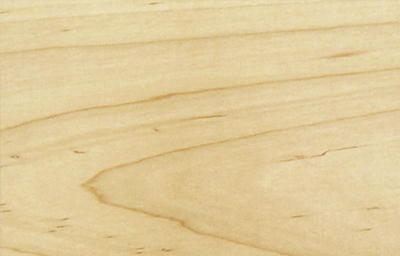Hardwood is the wood from angiosperm trees that produce seeds with some sort of covering. This might be a fruit, such as an apple, or a hard shell, such as an acorn. For the most part, angiosperm trees lose their leaves during cold weather
Northern hardwood is hardwood grown in temperate regions such as Europe, North America, Russia and New Zealand. The sustainability profile of all hardwoods is similar, with good durability and low material footprint when they come from sustainably managed forest.
Here are some of the most common hardwood species we offer at Kamsource:

White Ash
White Ash is straight-grained with moderately coarse texture. It glues, stains, and finishes very well and is quite similar to Red Oak in appearance and many working properties. White Ash can grow to 120' tall and a diameter of 6' with nearly half the trunk height clear of branches.
The sapwood is light-colored to nearly white and the heartwood varies from greyish or light brown, to pale yellow streaked with brown. Ash is used in furniture, flooring, doors, architectural millwork and moulding, kitchen cabinets and paneling. Also Ash is a popular species for food containers because the wood has no taste.


basswood
Basswood has a pale white to light brown color, with sapwood and heartwood sections not clearly defined. Growth rings tend to be subtle, and color is mostly uniform throughout the face grain of the wood. Knots and other defects are uncommon and grain is straight, with a fine, even texture and moderate natural luster.
It is easy to work, very soft and light and is one of the most suitable wood species for hand carving. Basswood also glues and finishes well, but has poor steam bending and nail holding characteristics.


Birch
Birch is a hardwood harvested in most of the Northern Hemisphere, and is one of the most widely used woods for veneer and plywood worldwide. The veneer is also used for doors, furniture, and paneling.
The heartwood tends to be a light reddish brown, with nearly white sapwood. Birch has a somewhat dull, uniform appearance. It is generally easy to work with hand and machine tools. Birch is perishable, and will readily rot and decay if exposed to the elements. On a hardness scale, birch lumber ranks at the top with hard-rock maple, and in fact is often mistaken for maple.


Cherry
Cherry is Reddish brown with a golden luster and is known as being one of the best all-around woods for workability. It is stable, strong and machines well. Freshly cut cherry is often very pale, but the wood oxidizes to its famously favorable rich brown red in time.
The grain is usually straight and easy to work—with the exception of figured pieces with curly grain patterns. The only difficulties typically arise if the wood is being stained, as it can sometimes give blotchy results—using a sanding sealer prior to staining, or using a gel-based stain is recommended. Sapwood is common, and may contribute to a high wastage factor.


hard maple
The sapwood of Hard Maple with color ranges from nearly white, to an off-white cream color is most commonly used for lumber rather than its heartwood. The heartwood tends to be a darker reddish brown. The wood has a close fine, uniform texture and is generally straight grained
Hard Maple is fairly easy to work with both hand and machine tools, though slightly more difficult than Soft Maple due to Hard Maple’s higher density. Turns, glues, and finishes well, though blotches can occur when staining, and a pre-conditioner, gel stain, or toner may be necessary to get an even color. In tree form, Hard Maple is usually referred to as Sugar Maple.


hickory
Hickory is among the hardest and strongest of woods native to the United States. On average, Hickory is denser, stiffer, and harder than either White Oak or Hard Maple. In addition to strength and hardness applications, it also has very high thermal energy content, and is sometimes used as fuel for wood stoves. Hickory is also used as charcoal in cooking meat, with the smoke imparting additional flavor to the food.
Hickory heartwood is brown or reddish brown in color and the sapwood is light in color. The grain is normally straight, but can sometimes be irregular or wavy and it has a coarse texture. Hickory may be somewhat difficult to work with hand tools, but looks very nice when finished. Glues, stains, and finishes well. Responds well to steam bending.


red oak
Arguably the most popular hardwood, Red Oak is by far the most abundant species group growing in the Eastern hardwood forests. The heartwood is a light to medium brown, commonly with a reddish cast and the sapwood is white to light brown and is not always sharply demarcated from the heartwood. The Red oak group comprises many species, of which about eight are commercial with an average tree height is 60 to 80 feet.
The wood is mostly straight-grained, with a coarse texture. Red oak machines well, nailing and screwing are good although pre-boring is recommended, and it can be stained to a good finish with a wide range of finish tones. It dries slowly and has moderately high shrinkage values, resulting in mediocre dimensional stability, especially in flat sawn boards.


soft maple
In most respects soft maple is very similar to hard maple, but is about 25 percent less hard. Generally the sapwood is greyish white, sometimes with darker colored pith flecks and the heartwood varies from light to dark reddish brown. The wood is usually straight-grained. Soft maple machines well and can be stained and polished to an excellent finish. It glues, screws, and nails satisfactorily. It dries slowly with minimal degrade and has good stability which means there is little movement in performance.
Soft Maple is used in furniture, paneling, kitchen cabinets, doors and musical instruments. It is often used as a substitute for hard maple or stained to resemble other species such as cherry. Its physical and working properties also make it a possible substitute for beech.


Black Walnut
It would be hard to overstate Black Walnut’s popularity. Its cooperative working characteristics, coupled with its rich brown coloration puts the wood in a class by itself. It’s heartwood can range from lighter pale brown to dark chocolate brown with darker brown streaks and it’s sapwood is pale yellow-gray to nearly white. Grain is usually straight, but figured grain patterns such as curl, crotch, and burl are also seen.
Walnut works easily with hand and machine tools, and nails, screws and glues well. It holds paint and stain very well for an exceptional finish and is readily polished. It dries slowly, and care is needed to avoid kiln degrade. Walnut has moderately coarse texture and good dimensional stability.


white oak
Like Red Oak, White Oak is a strong species with a lighter color than red oak and a more porous texture. It is eadily available but not as abundant as Red Oak. Its heartwood is white to a light tan brown, commonly with an olive cast and the sapwood is not always sharply demarcated from the heartwood. It is a long-lived species and generally achieves heights of 65' to 85' with diameters of 3' to 4'.
White Oak produces good results with hand and machine tools. It is straight grained with a coarse and uneven texture. The wood is hard,tough and durable, prized in boat and shipbuilding because it steam bends well. It has moderately high shrinkage values, resulting inmediocre dimensional stability, especially in flat-sawn boards. It stains beautifully and glues and nails well.
